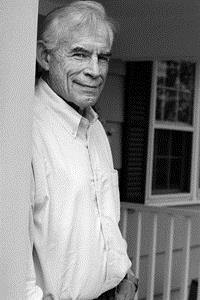
Christopher Albert Sims shared the 2011 Nobel Prize for Economics with Thomas Sargent for their independent work on the cause and effect on the macroeconomy – that is, taking an overview of the economy and its influences, rather than focusing on specific markets.
Sims’ Nobel lecture, titled Statistical Modeling of Monetary Policy and its Effects, demonstrated the use of mathematical statistical models to assess central bank monetary policy. Delivered in the aftermath of the 2008 financial crisis, when the US was indulging in a policy of quantitive easing, it is interesting to note that his research backed up the theories of monetarists like Milton Friedman that shifts in the money supply affect inflation. However, it also showed that causality went both ways, with interest rates, inflation and other variables leading to changes in the money supply.
This last fact in part represents one of Sims’ specialities – the use of vector autoregression in empirical macroeconomics. This makes allowances for the effects of any number of hypothetical variables, which may act on each other. In line with this, Sims is an advocate of Bayesian statistics, which account for ‘circumstantial evidence’ leading towards a conclusion (using today’s noon temperature to help estimate tomorrow’s, for example). Such evidence creates uncertainty without being totally random. By the same token, Sims is more sceptical of the popular notions of ‘rational expectations’ and ‘real business cycles’ as being too restrictive.
Sims was born in October 1942 in Washington DC to a business-minded family of intellectuals. Both his grandfathers were immigrants (one English, the other an Estonian Jew) and his mother was the first woman, and first Democrat, to be elected First Selectman (similar to a mayor) in the town of Greenwich, Connecticut.
With a family background in business, politics, labour relations and academia it is hardly surprising that ‘Chris’ was encouraged towards economics from an early age, and was given a book on Game Theory while still at school.
He spent the first part of his childhood in Germany, where his father was working with the post-war military government, before returning to the US, first to Virginia and then, when Chris was 11, to Greenwich. At high school, he favoured mathematics, as well as playing football and trombone, and in 1959 progressed to Harvard, where he majored in maths, gaining a BA, summa cum laude, in 1963. He then studied economics for a year at UC Berkeley, where he found an interest in econometrics, before returning to Harvard where he gained his PhD in 1968.
The following year Sims took a post at the University of Minnesota, where he was joined by fellow Harvard graduate Thomas Sargeant, whom he credits as a strong influence. Sims remained at Minnesota for 20 years, and it was there that he adopted a Bayesian approach to his work and teachings, which beginning to question the ‘revolutionary’ aspect of rational expectations, and their undermining of the of the work of the Keynesian econometricians, was overdone.
After Sargeant left, the emphasis at Minnesota drifted away from macroeconomics, so Sims also left, heading first to Yale and then, in 1999, to Princeton, where he is John F Sherrerd ’52 University Professor of Economics.
Sims is a fellow (and former president) of the Econometric Society, a member of the American Academy of Arts and Sciences, a member of the National Academy of Sciences and 2012 president of the American Economic Association.
In 1967 he married Catherine Sears. They have three children, four grandchildren and enjoy horse riding.
